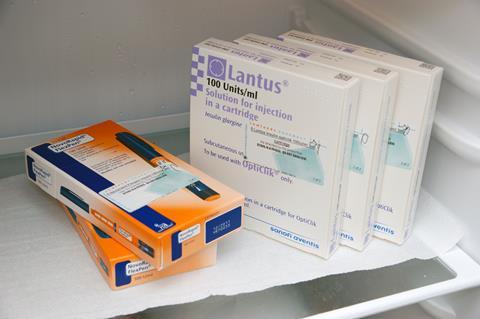Review suggests more lenient storage guidelines could make diabetes treatments more accessible
Human insulin is more stable in unrefrigerated conditions than previously believed, according to a new systematic review. Examining existing research and previously unpublished manufacturer data, a team from the Cochrane Collaboration concluded that unopened containers can be stored unrefrigerated for months without a clinically relevant loss in activity.

Insulin is an injectable peptide hormone used to treat diabetes. To prevent self-aggregation, zinc ions and phenolic preservatives that stabilise insulin in hexameric complexes are added to formulations. High temperatures can cause the hexamers to disassociate, allowing insulin monomers to form fibrils and impact potency. Although recommendations differ by brand, type of insulin and packaging, health authorities and manufacturers generally recommend storing unopened insulin between 2 and 8°C. However, in places facing power fluctuations, war conditions or a lack of access to reliable refrigeration this can be a major obstacle.
The current recommendations on storage of human insulin appear to be based on old data
After reviewing 17 studies and previously unpublished data from manufacturers Bioton, Eli Lilly and Novo Nordisk, the team concluded that short and intermediate-acting human insulin can be stored for up to two months at 37°C and up to six months at 25°C without a clinically relevant loss in activity. They also highlighted the effectiveness of simple cooling devices such as clay pots.
The one pilot clinical study in the review measured effects on plasma glucose levels in eight healthy volunteers administered insulin stored for six weeks in an unglazed clay pot. The results were comparable to refrigerated insulin.
While two of the 16 in vitro studies included reported insulin activity loss of up to 18% after one to four weeks at 37°C, the rest of the evidence disagrees, with no clinically relevant loss of activity after up to four months at elevated temperatures, as well as oscillating temperatures designed to model day-night fluctuations.
Additionally, four studies looked at the sterility of prefilled syringes, and opened or unopened vials of insulin kept under such conditions, and reported no microbial contamination.
A wealth of data from insulin manufacturers found minimal loss of insulin activity after weeks to months at up to 37°C. Novo Nordisk’s investigations found no relevant increase in degradation for insulin stored at 37°C for two months, or 25°C for six months.
The conclusions of this Cochrane review are promising for diabetes patients in areas where refrigeration is challenging. As Graham Ogle, a paediatric endocrinologist and general manager of Diabetes Australia’s Life For a Child programme explains: ‘If thermal storage recommendations for insulin are loosened so that storage outside a refrigerator is possible for longer periods and at a higher temperature, then this would ease anxiety for families and health professionals, reduce insulin wastage, and save families money in transport and missed work costs.’
Insulin storage recommendations are starting to change. In April 2022, the European Medicines Agency gave its support to a request from Novo Nordisk to allow two of its insulin products to be stored at up to 30°C for four weeks, when used outside the EU.
When asked why these changes are only starting to happen now, Cochrane’s Bernd Richter at the Heinrich Heine University in Düsseldorf, Germany, can only speculate. ‘The current recommendations on storage of human insulin appear to be based on old data for drug regulatory authorities which of course tried to minimise any risk regarding storage conditions and handling of insulin. Probably no one had thought that there would be circumstances that could make the normal procedure impossible.’
Further research is needed on insulin analogues, mixed insulin formulations and insulin pumps, for which body temperature and daily movements of a patient can increase fibril formation. Similar investigations into how extreme cold temperatures affect insulin stability and potency are likewise necessary. ‘People living in elevated areas of the world like the Himalayas should not be forgotten since they face the problem to keep insulin warm,’ says Richter.
References
B Richter, B Bongaerts and M-I Metzendorf, Cochrane Database Syst. Rev., 2023, CD015385 (DOI: 10.1002/14651858.CD015385.pub2)

















No comments yet